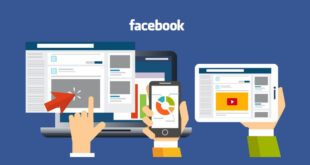Health information technology (HIT) plays a pivotal role in shaping the future of healthcare. By integrating advanced technologies into healthcare systems, providers can enhance patient care, streamline operations, and improve communication. This blog post delves into the components of HIT, the benefits it brings to the healthcare sector, and the challenges organizations face when implementing these technologies. We will also examine a real-world case study that illustrates the impact of HIT on patient outcomes and operational efficiency.
The Challenges Facing Healthcare
The healthcare industry grapples with numerous issues that can impede effective patient care delivery. Addressing these challenges is crucial for improving health outcomes and patient satisfaction.
Fragmented Healthcare Systems
Many healthcare organizations operate with outdated and disconnected systems, leading to fragmented care. For example, when a patient undergoes tests, the results may not be immediately accessible to their healthcare provider. A study published in the Journal of the American Medical Association highlights that fragmented systems increase the likelihood of medical errors and compromise patient safety.
Inefficient Data Management
The healthcare sector generates enormous amounts of data, and managing this information poses a significant challenge. According to the World Health Organization, inadequate data management contributes to inefficiencies that can negatively impact patient care. Healthcare providers often struggle to access complete patient information, which can delay diagnoses and treatments.
Compliance with Regulatory Standards
Healthcare organizations must navigate a complex landscape of regulations, including the Health Insurance Portability and Accountability Act (HIPAA). Maintaining compliance can be challenging and resource-intensive, creating an additional administrative burden for healthcare providers.
Patient Engagement Barriers
Engaging patients in their own healthcare is essential for positive outcomes, yet many patients encounter difficulties accessing their health information or communicating with providers. A survey from the Pew Research Center found that 57% of patients want access to their medical records but often face barriers to obtaining them.
The Consequences of These Challenges
The challenges outlined above can lead to significant repercussions for both healthcare providers and patients. Below are some critical issues that highlight the urgency for technological solutions in the healthcare sector:
Rising Healthcare Costs

When healthcare systems are inefficient, costs tend to escalate. A report from the American Journal of Managed Care indicates that miscommunication and delays in care often result in unnecessary tests and prolonged hospital stays, further driving up expenses.
Patient Safety Risks
Fragmented information systems can increase the risk of medical errors. The Institute of Medicine estimated that between 44,000 and 98,000 patients die each year in hospitals due to preventable medical errors. Implementing HIT can help mitigate these risks by providing timely access to complete patient records.
Decreased Patient Satisfaction
Patients who encounter obstacles in accessing their health information often report lower satisfaction with their care experience. According to a report by Press Ganey, patient satisfaction scores are notably lower in facilities lacking integrated technology solutions. Discontented patients may seek care elsewhere, jeopardizing the provider’s reputation and financial stability.
Health Information Technology as a Solution
Health information technology offers a pathway to overcome the numerous challenges in healthcare. By leveraging HIT, organizations can improve care delivery, enhance patient engagement, and streamline operational processes. Here are some essential components of HIT:
Electronic Health Records (EHR)
Electronic Health Records (EHR) serve as a cornerstone of HIT. These digital systems allow healthcare providers to document and manage patient information electronically, ensuring that data is easily accessible and up-to-date. According to the Office of the National Coordinator for Health Information Technology (ONC), approximately 96% of non-federal acute care hospitals in the U.S. had adopted EHR systems by 2021.
Benefits of EHR
- Enhanced Coordination of Care: EHR systems facilitate better communication among healthcare providers, ensuring that all professionals involved in a patient’s care have access to the same information.
- Reduction in Errors: With accurate and comprehensive patient data readily available, the likelihood of medication errors and misdiagnoses is significantly reduced.
Telemedicine
Telemedicine has gained immense popularity, especially during the COVID-19 pandemic. It enables patients to consult healthcare providers remotely, improving access to care without the need for in-person visits.
Benefits of Telemedicine
- Increased Access to Care: Telemedicine allows patients in rural or underserved areas to receive care without needing to travel long distances, breaking down geographical barriers.
- Convenience for Patients: Patients can schedule appointments at times that suit them, which leads to improved adherence to follow-up care and treatment plans.
Health Information Exchanges (HIE)
Health Information Exchanges (HIE) facilitate the secure sharing of patient information across different healthcare organizations. This connectivity fosters collaboration among providers and enhances overall patient care.
Benefits of HIE
- Comprehensive Patient Records: HIEs ensure that healthcare providers have access to a patient’s complete medical history, resulting in more informed decision-making during care delivery.
- Minimized Redundancies: By accessing shared patient information, healthcare providers can avoid unnecessary tests and procedures, leading to a more efficient use of resources.
Patient Portals
Patient portals empower patients by providing access to their health information, allowing them to schedule appointments, communicate with healthcare providers, and manage their healthcare needs more effectively. This level of engagement can lead to improved health outcomes.
Benefits of Patient Portals
- Enhanced Patient Engagement: Patients who actively participate in their care are more likely to adhere to treatment plans and follow through with necessary appointments.
- Improved Communication: Portals offer a secure channel for patients to ask questions and receive timely responses from their healthcare providers, fostering a more collaborative relationship.
Case Study: Intermountain Healthcare

Intermountain Healthcare, a nonprofit health system based in Utah, serves as an exemplary case study for the successful implementation of HIT. The organization has adopted various HIT solutions to improve patient care and operational efficiency.
Overview of Intermountain Healthcare
Intermountain Healthcare operates 24 hospitals and over 185 clinics, serving a diverse population of patients. In 2018, the organization made a substantial investment in EHR systems and other HIT solutions to enhance its service delivery.
Implementation of EHR and Telemedicine
Intermountain Healthcare’s EHR system allows healthcare providers to access patient information seamlessly, leading to improved care coordination. The organization also expanded its telemedicine services, enabling patients to consult healthcare providers from the comfort of their homes.
Results and Outcomes
The results of Intermountain Healthcare’s HIT initiatives have been noteworthy:
- Improved Patient Outcomes: A study published in Health Affairs found that the organization experienced a 20% reduction in hospital readmission rates due to better care coordination facilitated by EHRs. This demonstrates how integrated technology can lead to more effective patient management.
- Increased Patient Satisfaction: Intermountain’s patient satisfaction scores have improved significantly, with 90% of patients reporting high satisfaction with their overall care experience.
Financial Benefits
Intermountain Healthcare’s investment in HIT has led to substantial financial savings. A report from the National Academy of Medicine estimated that the organization saved approximately $1.4 million in avoided hospitalizations within a single year, showcasing the economic benefits of implementing HIT solutions.
Overcoming Challenges in HIT Implementation
Despite the numerous advantages of HIT, implementing these technologies is not without challenges. Here are some common obstacles organizations may encounter and strategies to overcome them:
Resistance to Change
Healthcare providers may be hesitant to adopt new technologies due to fear of disruption or a lack of familiarity with the systems. To address this resistance:
- Provide Comprehensive Training: Offering extensive training programs can help staff become familiar with new systems and highlight the benefits of HIT.
- Involve Stakeholders in the Decision-Making Process: Engaging healthcare providers in discussions about technology adoption can foster a sense of ownership and support for the initiatives.
High Initial Costs
Implementing HIT solutions often requires significant upfront investment, which can deter organizations from making the transition. To mitigate these costs:
- Phased Implementation: Organizations can gradually roll out HIT solutions to spread costs over time and minimize disruptions to daily operations.
- Explore Funding Opportunities: Healthcare organizations can seek federal and state funding options designed to support HIT adoption.
Data Privacy and Security Concerns

The sensitive nature of healthcare data raises legitimate concerns about privacy and security. To address these issues, organizations should:
- Implement Robust Security Measures: Adopting industry-standard security protocols, such as data encryption and strict access controls, can help protect patient data from unauthorized access.
- Educate Staff on Data Privacy Regulations: Conducting regular training on data privacy laws and best practices ensures all employees understand their responsibilities regarding patient information.
The Future of Health Information Technology
As technology continues to evolve, the future of HIT looks promising. Here are some emerging trends that may significantly shape the healthcare landscape:
Integration of Artificial Intelligence (AI) and Machine Learning
AI and machine learning are poised to revolutionize healthcare by enhancing diagnostic accuracy and streamlining administrative processes. For instance, AI algorithms can analyze medical images to detect conditions earlier than traditional methods, potentially leading to better outcomes for patients.
Expansion of Mobile Health Applications
Mobile health apps are gaining traction, allowing patients to track their health metrics, communicate with providers, and manage their healthcare needs seamlessly. These apps can empower patients to take an active role in their care, ultimately improving health outcomes.
Emphasis on Interoperability
The future of HIT will likely prioritize interoperability, enabling disparate systems to communicate and share data effectively. Enhanced interoperability can lead to improved care coordination and more accurate, timely patient management.
Increased Focus on Patient-Centered Care
As healthcare continues to shift towards a patient-centered model, HIT will play a critical role in ensuring that patients have the information and resources they need to make informed decisions about their care. Technologies such as patient portals and mobile health apps will empower patients to engage actively in their health journeys.
Conclusion
In summary, health information technology (HIT) is transforming the healthcare landscape by addressing significant challenges such as fragmented systems, inefficient data management, and patient engagement barriers. By implementing advanced technologies like electronic health records (EHR), telemedicine, health information exchanges (HIE), and patient portals, healthcare organizations can enhance patient care, improve operational efficiency, and ensure better health outcomes.
Real-world examples, such as Intermountain Healthcare, demonstrate the substantial benefits of HIT in reducing hospital readmissions, increasing patient satisfaction, and achieving financial savings. However, the path to successful HIT implementation is not without its hurdles, including resistance to change, high initial costs, and data privacy concerns. By adopting strategies to overcome these challenges, healthcare providers can leverage the full potential of HIT to deliver high-quality care in an increasingly complex environment.
FAQs
1. What is health information technology (HIT)?
Health Information Technology (HIT) encompasses various technologies and systems designed to manage and exchange health information. It includes electronic health records (EHR), telemedicine, health information exchanges (HIE), and patient portals, all aimed at improving patient care and healthcare operations.
2. How does HIT improve patient care?
HIT enhances patient care by providing healthcare providers with timely access to complete and accurate patient information. This leads to better care coordination, reduced medical errors, improved patient engagement, and more efficient management of healthcare services.
3. What are the main challenges of implementing HIT in healthcare organizations?
Challenges include resistance to change from healthcare providers, high initial costs associated with technology adoption, and concerns regarding data privacy and security. Addressing these challenges requires comprehensive training, phased implementation strategies, and robust security measures.
4. What is the future of health information technology?
 Earnmoney Hub
Earnmoney Hub



